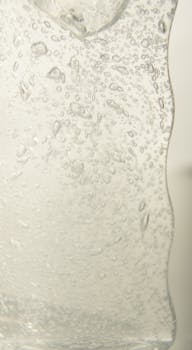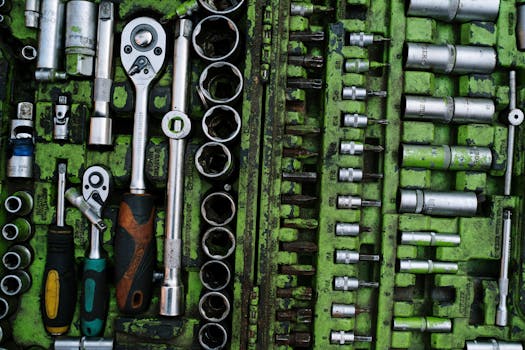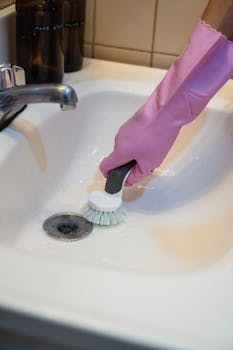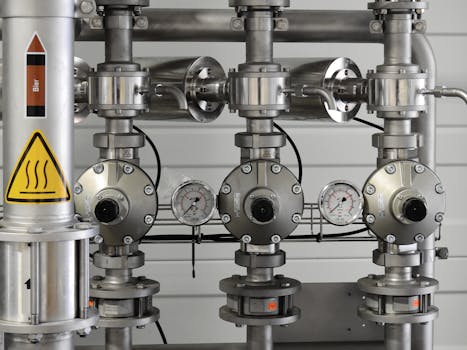Master Plumbing Basics: A Comprehensive Guide for Beginners
By Brian on November 15, 2023

Introduction to Plumbing Basics
Imagine trying to start your day without a functioning plumbing system. No morning shower, no fresh coffee brewing, no flushing toilet – a morning nightmare, right? That’s because modern convenience and our everyday routine are bound to the intricacies of plumbing systems. Understanding and learning the basics of plumbing are not only helpful for eager DIY enthusiasts but essential for every homeowner or occupant.
So, how exactly do we define plumbing? Simply put, it’s the system that brings freshwater in and takes wastewater out, ensuring that your home or business operates smoothly. It’s also the system that many people take for granted until an unexpected plumbing problem arises. But let’s dig a bit deeper into this subject.
Understanding the Role of Plumbing in a Home
When you wake up and go about your morning routine – showering, making breakfast, brushing your teeth – you’re using your plumbing system. This might make it sound simple, but in reality, it’s a complex network of pipes, fixtures, and drains, all skillfully coordinated to bring clean water into your home and whisk spent water away.
Plumbing is not all about water, either. This system is responsible for gas supply to your stove and has a pivotal role in your home heating systems as well. It’s the hidden hero inside your walls, ensuring a comfortable, healthy, and hassle-free living environment.
The Two Subsystems of Plumbing: Freshwater In and Wastewater Out
Broken down into its fundamentals, plumbing consists of two separate subsystems. Both are simple in concept: one brings freshwater in under pressure, and the other takes wastewater out by gravity. It’s an intelligent design, a balance of pressure and release, ensuring that clean water is always available at your fingertips, and waste is properly disposed of.
Remember, gaining this basic understanding is the first step on your journey to master plumbing basics and achieve a certain degree of self-reliance when it comes to maintaining or troubleshooting your home’s plumbing system.
Image: Blueprint of a basic residential plumbing system
Quick Plumbing Basics:
– Role of Plumbing: Ensures the smooth operation of water and gas supply in a home.
– Plumbing Subsystems: Freshwater system (under pressure) brings potable water in, and the drainage system (gravity-drawn) takes wastewater out.
– Crucial Parts of Home Plumbing: Pipes, fixtures (faucets, showers), drains, supply lines, and shutoff valves.
– Basic Plumbing Tools: Wrenches, pliers, drain snake, plunger, and pipe cutter.
Stay tuned as we delve deeper into the principles, methods, and tools associated with this fascinating subject. As an experienced team at Go Pro Plumbing, we are excited to empower you with insights and practical knowledge to help you learn plumbing basics. Welcome to your comprehensive guide to mastering plumbing basics!
The Basic Principles of Plumbing
Just as a solid foundation is crucial to a building’s stability, understanding the basic principles of plumbing is essential to mastering its basics. Let’s dive into these principles one by one.
Principle of Clean Water

The first principle of plumbing revolves around Clean Water. It’s crucial that every home or facility intended for human occupancy is provided with a pure water supply. It’s the role of the plumbing system to ensure that the water entering your home is safe, clean, and suitable for drinking, bathing, and other domestic purposes.
Principle of Volume and Pressure
The second principle, the Volume and Pressure of water, is equally important. The water that enters your home is under pressure, enough to allow it to travel upstairs, around corners, or wherever else it’s needed. At Go Pro Plumbing, we ensure that your plumbing system maintains an optimal water pressure level, preventing issues like weak flow or pipe damage from too much pressure.
Principle of Efficiency
The Efficiency principle ensures that the plumbing system operates at its best, minimizing waste and maximizing performance. This includes efficient water use, energy-efficient appliances, and systems designed for minimal maintenance.
Principle of Explosion
The Explosion principle is a safety measure. It refers to the necessary precautions to prevent the build-up of dangerous gases or pressure within the plumbing system. This usually involves vent pipes that allow gases to escape, preventing potential explosions.
Principle of Sewer
The Sewer principle relates to the removal and disposal of waste and wastewater. The plumbing system should be designed to efficiently and safely carry waste materials away from your home to a public sewer or private septic system.
Principle of Plumbing Unit
The Plumbing Unit principle refers to the configuration of pipes, fittings, and appliances that make up the plumbing system. Each unit should be correctly installed and maintained for the entire system to function smoothly.
Principle of Ventilation
Ventilation in plumbing involves the use of vent pipes to maintain air balance in the drain pipes, allowing water to flow smoothly through the drain system. This principle plays a crucial role in preventing slow drainage and sewer gases from entering the home.
Principle of Cleanouts
Finally, the Principle of Cleanouts. Cleanouts are accessible points in the plumbing system used for removing blockages. They are strategically placed in specific parts of the drainage system to allow easy access for maintenance and cleaning.
By understanding these basic principles of plumbing, you’re on your way to mastering plumbing basics. These principles not only serve as a guide for professional plumbers but also provide homeowners with insights on how their plumbing system works and how to maintain it. In the next section, we’ll guide you through the essential tools for DIY plumbing.
Essential Tools for DIY Plumbing
Imagine if you could perform minor plumbing jobs around your home without having to call a professional every time. With this comprehensive guide to the essential tools for DIY plumbing, you’ll be able to tackle common plumbing issues with confidence. Let’s dive in!
The Importance of a Basin Wrench
A basin wrench is a key tool used to loosen and tighten fixtures and pipes underneath your kitchen or bathroom sink. Its unique design allows for easy turning in tight spaces, making it a must-have for all DIY plumbing enthusiasts.
The Role of a Drain Auger
Also known as a snake, a drain auger is a vital tool for unclogging drains or toilets. While it offers a quick fix to clogs, it’s essential to use it carefully to avoid damaging your fixtures. Remember, if the drain is still blocked after using the snake, it might be time to call in our professional plumbers for assistance.
When to Use a Hacksaw
A hacksaw is an incredibly useful tool for cutting through small pipes during minor pipe replacements. Remember to use safety goggles and gloves when using this tool to protect yourself from any tiny metal or plastic shavings.
The Utility of a Pipe Cutter
While hacksaws are great for larger or thicker pipes, pipe cutters offer precise and clean cuts through PVC pipes. They’re ideal for smaller pipes and are easy to use, which makes them a great addition to your DIY toolkit.
The Necessity of a Pipe Wrench
A pipe wrench is an essential tool for any homeowner. Its serrated jaw provides increased grip strength, making it perfect for adjusting or removing stubborn pipes and bolts.
The Use of Plumber’s Tape
Plumber’s tape, also known as Teflon tape, is used to create a watertight seal between pipe connections. This helps prevent water leakage, ensuring that your plumbing system remains efficient and leak-free.
The Importance of a Plunger
No DIY plumbing toolkit is complete without a good plunger. Plungers are crucial for clearing toilet clogs, and there are different types designed for different types of clogs. Make sure to choose the one that suits your needs best.
Safety Measures: Goggles and Gloves
Safety should always be your top priority when performing any DIY tasks. When cutting pipes or working under sinks, wearing safety goggles and gloves can protect you from tiny metal or plastic shavings.
The Function of a Strap Wrench
A strap wrench is a specialized wrench used for loosening and tightening round objects, like pipes. Its rubber-coated strap ensures a firm grip without causing any damage.
The Versatility of Tongue and Groove Pliers
Tongue and groove pliers are another must-have tool for any DIY plumbing enthusiast. They have a unique head design that allows you to adjust pipes to the exact size needed, making them ideal for tight spaces around fixtures and under sinks.

Understanding how to use these tools will empower you to handle minor plumbing issues in your home. However, remember that more complex problems may require professional expertise. At Go Pro Plumbing, we’re always ready to assist you with any plumbing needs. In the next section, we’ll guide you on how to fix common DIY plumbing issues.
Common DIY Plumbing Issues and How to Fix Them
Whether it’s an unexpected clog in the kitchen sink or a running toilet, plumbing issues can disrupt your daily routine. But don’t worry, not all problems require a call to the professionals right away. With the right tools and a bit of knowledge, you can tackle some of these common plumbing issues yourself. Let’s dive in and learn how you can be your own plumber in a pinch!
How to Fix a Clogged Drain
Clogged drains are one of the most frequent household plumbing issues. It could be hair in the bathroom sink, food particles in the kitchen sink or a buildup of soap residue in the shower drain. But before you reach for that bottle of chemical drain cleaner, hold on a moment! These quick-fix solutions can actually cause long-term damage to your pipes. Instead, try a more natural and safer method.

Unclog Using Vinegar and Baking Soda
1. Pour a quarter cup of baking soda into the drain.
2. Pour one cup of white vinegar down the drain and let it sit for 10-15 minutes. The chemical reaction between the two will help break up minor clogs.
3. Run hot water from the tap for 10-15 minutes until it runs through.
This simple yet effective method can help clear minor clogs without causing any pipe corrosion. However, if the clog persists, it may be time to call in the professionals at Go Pro Plumbing.
How to Fix a Running Toilet
A running toilet can be a significant source of water waste, resulting in high water bills. It’s usually caused by problems with the flapper, fill valve, or float. Here’s a quick guide on how to fix it:
- First, turn off the water supply to your toilet. You’ll usually find the shut-off valve on the wall behind the toilet.
- Remove the toilet tank lid and inspect the float, flapper, and fill valve. If the float is set too high, water will overflow into the toilet overflow tube and cause the fill valve to continue running. Adjust the float to the correct level.
- Check the flapper. If it’s worn out or damaged, it may not seal properly, causing water to leak from the tank into the toilet bowl, and the toilet to run constantly. Replace the flapper if necessary.
- If the fill valve is faulty, replace it following the manufacturer’s instructions.
Remember, if your toilet is persistently running or requires frequent repairs, it may be time to consider a toilet replacement. A new toilet can save water and money in the long run.
Being able to tackle these common plumbing issues yourself is a great skill to have. Not only does it save you time and money, but it also gives you a sense of accomplishment. However, always remember that for more complex problems, it’s best to call in the professionals at Go Pro Plumbing. We’re here to help when you need us!
Understanding and Managing Your Home’s Water Supply
Owning a home means having the responsibility to manage and understand the fundamentals of your property’s water supply. A well-maintained plumbing system not only ensures the smooth running of your household but also contributes to the overall health and safety of your family. So, let’s dive right into understanding the fundamental elements of your home’s water supply.
The Role of Pressure in Your Water Supply
Water pressure is an essential aspect of your home’s plumbing system. It ensures that water flows from the mains to your faucets and appliances. Furthermore, it facilitates the smooth operation of your water-related appliances such as washing machines and dishwashers. Moreover, adequate water pressure is necessary for a comfortable shower.
The Importance of the Main Shutoff Valve
The main shutoff valve is your home’s primary defense against a plumbing catastrophe. It allows you to completely stop the flow of water into your home, which is critical in the event of a significant leak or pipe burst. This valve is typically located near the water meter, usually near the street under a metal cover. Familiarize yourself with its location and operation so that you can act quickly in an emergency.
The Use of Individual Stop Valves
Beyond the main shutoff valve, individual stop valves control the water flow to specific areas of your home, like your kitchen sink or toilet. They come in handy when you need to isolate a particular area for repairs or maintenance without disrupting the entire home’s water supply.
The Process of Hot Water Supply
Hot water supply is another crucial aspect of your home’s water system. When you turn on the hot water tap, cold water enters your water heater tank and pushes the hot water out to the tap. The heating element or gas burner then heats the incoming cold water. A thermostat maintains the water in the tank at a set temperature, ensuring you have hot water whenever you need it.
The Function of a Water Heater and Thermostat
Your water heater, whether it’s electric or gas-fueled, plays a vital role in your home’s water supply system. It heats the water and keeps it at a set temperature, ready for use when needed. The thermostat controls the water heater’s operation, maintaining the water temperature within a specified range. Regular inspection and maintenance of your water heater can extend its lifespan and ensure efficient operation.
You can be proactive by understanding these essential aspects of your home’s water supply. However, remember that we at Go Pro Plumbing are always ready to assist you with any complicated issues or repairs. Our professional water main repairs and other plumbing services ensure your home’s water systems are always in top shape, contributing to your family’s health and your property’s value.
Maintaining your home’s plumbing doesn’t have to be a daunting task. With a basic understanding of the system and the help of professionals when needed, you can ensure a smoothly functioning water supply. So keep learning and mastering these plumbing basics for a well-maintained home.
When to Hire a Professional Plumber
Taking on DIY plumbing tasks is a fantastic way to learn and can save you money on smaller, manageable projects. However, certain plumbing tasks require the knowledge and tools only a professional plumber can provide. Identifying when a job is beyond your DIY expertise is crucial to preventing costly mistakes and potential damage to your home.
Identifying Plumbing Jobs Beyond DIY Expertise
While it’s rewarding to fix a leaky faucet or unclog a slow-draining sink, some plumbing issues are too complex for the average DIYer. For instance, projects involving gas lines, complex installations, and major repairs always require a professional’s touch and expertise.
Situations that warrant the immediate attention of a professional plumber include:
- Sewer Line Issues: Clogs or breaks in your sewer line can lead to messy backups and serious health hazards. Leave these to the experts at Go Pro Plumbing, who offer efficient sewer line repair and cleaning services.
- Water Heater Repairs: A malfunctioning water heater can disrupt your daily routine and requires expert attention.
- Leak Detection and Repair: Hidden leaks can cause significant water waste and damage to your home. A professional plumber has advanced tools and techniques to accurately locate and fix these leaks.
- Plumbing Emergencies: In the event of a plumbing emergency, such as a burst pipe or flooding, it’s crucial to act swiftly. At Go Pro Plumbing, we understand the urgency of these situations and respond promptly to minimize damage.
The Benefits of Hiring a Professional Plumber
There are numerous benefits to hiring a professional plumber, even if you’re handy around the house.
Expertise: Professional plumbers have the necessary training and skills to handle complex plumbing issues. They can efficiently complete projects, saving you time and potential headaches.
Warranties and Insurance: Unlike DIY work, professional plumbing services come with warranties and insurance. This protection offers you peace of mind, knowing that if something goes wrong, it’s covered.
Safety: Plumbing work, especially involving gas lines or major repairs, can pose safety risks. Professionals are trained to handle these tasks safely, minimizing the risk of injury or property damage.
Long-term solutions: While a DIY fix might seem to solve the issue in the short term, it might not be a lasting solution. A professional plumber can provide a more permanent fix, preventing future issues.
Preventive Measures: Regular maintenance is key to preventing most plumbing emergencies. A professional plumber, like the ones at Go Pro Plumbing, can inspect your plumbing system regularly and catch any potential issues before they become emergencies.
At Go Pro Plumbing, we understand the value of both DIY efforts and professional expertise. We’re here to support you in maintaining your home’s plumbing system, providing expert services when you need us. Remember, when it comes to plumbing, knowing when to call in the professionals is just as important as mastering the basics.
Conclusion: Mastering Plumbing Basics for DIY Success
There’s no denying it: learning plumbing basics can feel akin to unlocking new buttons on a calculator, as a Reddit user humorously points out. It’s a skill that opens up a new realm of home maintenance, letting you tackle common issues with confidence while saving time and money in the process.
Recap of Key Plumbing Principles and Techniques
Throughout this guide, we’ve explored the essential principles of plumbing, from understanding the role of plumbing in a home to the two fundamental subsystems: freshwater in and wastewater out. We’ve also walked through the essential tools every DIY plumber needs, from the ever-reliable basin wrench to the indispensable pipe cutter.
We’ve dived into how to fix common DIY plumbing issues like clogged drains and running toilets, and emphasized the importance of understanding and managing your home’s water supply. But importantly, we’ve also looked at when it’s time to step back and let a professional plumber take the reins.
The Value of Learning Plumbing Basics for Home Maintenance
Learning plumbing basics is a valuable investment for any homeowner. It equips you with the skills to perform simple repairs and maintenance, preventing minor issues from escalating into major—and expensive—problems.
Moreover, being familiar with plumbing basics provides a better understanding of how your home operates. This knowledge can help you make more informed decisions about home improvements and renovations, and even potentially increase the value of your property.
At Go Pro Plumbing, we believe in the power of knowledge. That’s why we’re committed to providing resources to help our customers better understand their home’s plumbing system, whether that’s through informative guides like this one or through our expert services.
Encouragement for Continued Learning and Practice
As with any new skill, mastering the basics of plumbing takes time and practice. Don’t be discouraged by initial challenges or mistakes. These are stepping stones to becoming proficient and confident in handling basic plumbing tasks around your home.
Remember, we are here to support you along the way. If you’re ever unsure about a plumbing issue, it’s always better to err on the side of caution and consult with a professional. At Go Pro Plumbing, our team of experienced professionals is always ready to assist with any plumbing concerns you may have.

As you continue your journey in mastering plumbing basics, remember this: every bit of knowledge you gain is an investment in your home—and that’s something to be proud of. Happy plumbing!
